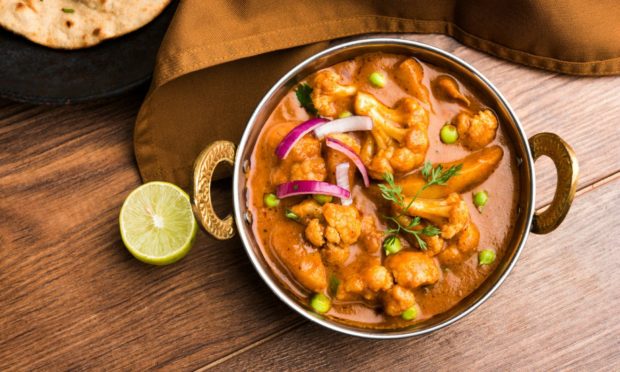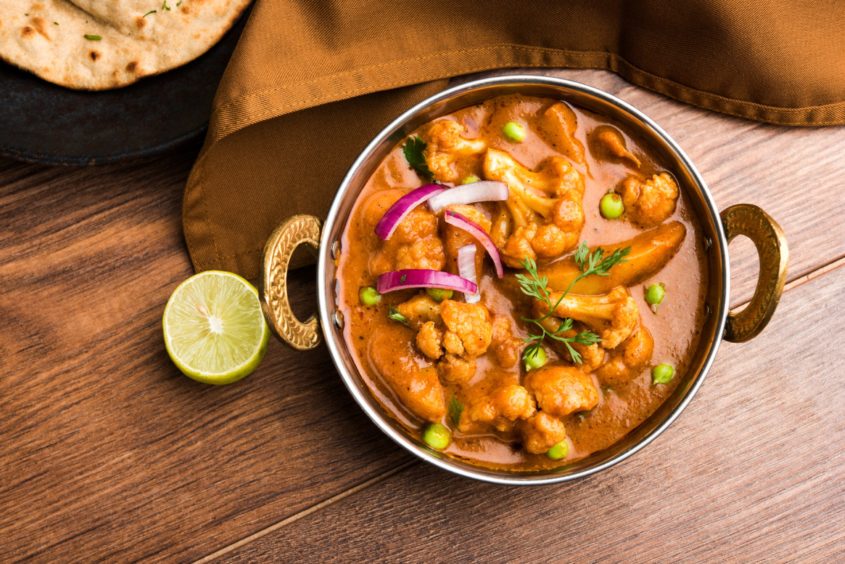It’s hard to believe cauliflower was the toast of Louis XIV’s court but Tim Dover, chef owner of The Roost Restaurant in Bridge of Earn, lifts it up again with a recipe for Aloo Gobi.
Now we are right in the heart of summer there are so many fresh British ingredients I could write about but one that often gets overlooked, in my opinion, is the humble cauliflower.
Cauliflower is one of the cultivated varieties of the cabbage plant family and is closely related to broccoli. It’s hard to imagine that this vegetable, now taken somewhat for granted, was once all the rage at the court of Louis XIV and served in rich and elegant dishes there.
Cauliflower is very nutritious, and may be eaten boiled, fried, roasted, steamed, pickled, or raw. At the restaurant we use all these techniques to incorporate cauliflower into many of our dishes throughout the year.
My personal favourite thing to make with cauliflower though is an Indian dish called Aloo Gobi. This is a homely dish that most north Indians enjoy. It has no sauce and is generally eaten with a bread although I like to serve it at home as a side dish along with a meat curry.
The recipe is very easy and quick to prepare and packed with flavour.
Find more from the Chef’s Table series here.
Aloo Gobi
Serves 4-6
Ingredients
- 250g new potatoes (waxy potatoes are best)
- 1 large cauliflower
- 5 tbsp vegetable oil
- 1 tsp cumin seeds
- 1 tsp ground cumin
- ½ tsp ground coriander
- ¼ tsp ground turmeric
- ¼ tsp Cayenne pepper
- 1 fresh green chilli (finely chopped)
- Salt and pepper
- 150ml natural yoghurt (optional)
- 15g fresh coriander leaves (optional)
Method
- Boil the potatoes till cooked, drain, set aside, and allow to cool. Once cool cut each potato in half.
- Break up the cauliflower into large florets and soak these in a bowl of water for 30 minutes. Drain and set aside.
- Put the oil in a large non-stick pot and set over a medium heat. Once hot add the cumin seeds and allow to sizzle for a few seconds.
- Now add the cauliflower and stir. Let the cauliflower brown in spots then cover, turn the heat down a little and continue to cook for around 4-6 minutes or until the cauliflower is almost done but still has a bit of crispness to it.
- Add the potatoes, ground cumin, coriander, turmeric, cayenne, green chilli, salt and pepper.
- Stir gently and mix. Continue to cook on a low heat, uncovered for a further three minutes or until the potatoes are heated through, check, and adjust the seasoning if required.
- Place in a serving dish, top with coriander leaves and serve with a small dish of natural yoghurt on the side.
- I would also recommend serving some warm chapatis with this.

